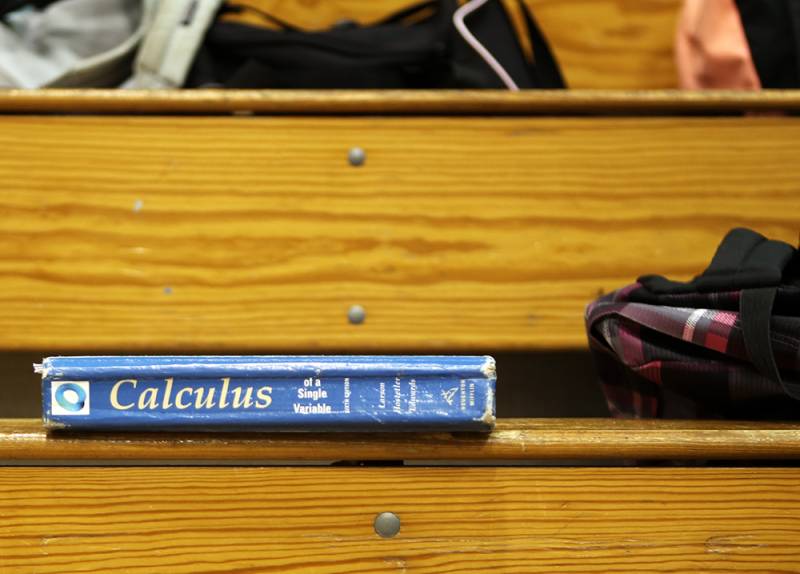This guide seeks to answer some of the most common questions about what the law means for STEM students and how colleges plan to implement it.
What’s the problem AB 1705 is trying to solve?
Community colleges regularly used to place students deemed to be underprepared in remedialclasses that can’t be transferred to a four-year university. That started to change after AB 705 took effect in 2018. The Public Policy Institute of California found that between fall 2018 and 2022, the share of students starting in transfer-level math rose, as did the percentage of first-time math students completing such a course in one term.
Still, racial equity gaps persisted, with white students completing courses at higher rates than Black and Latino students. Advocates also worried that some community colleges were not implementing AB 705 correctly.
AB 1705 builds on AB 705. As a result of its passage, the state education code now requires U.S. high school graduates to begin community college in courses that meet a requirement of their intended major, though there is an exception if a college can prove a prerequisite course would benefit students. Colleges also have to provide extra help to students who want or need it, such as tutoring or concurrent support courses.
“Students should be aware that they have the right to access calculus and, if they want support while they’re in that course, that they’re entitled to get support,” said Jetaun Stevens, a senior staff attorney at the nonprofit law firm Public Advocates.
What guidance has the California Community Colleges Chancellor’s Office provided colleges on implementing the law?
All STEM students must be given the option to take STEM calculus starting on July 1, 2025, according to California Community Colleges Chancellor’s Office guidance.
Only students who either had a high school GPA of 2.6 or less, or who did not pass high school trigonometry, precalculus or calculus with at least a C have the option to take preparatory courses for calculus. Traditionally, that would include courses like precalculus.
To comply with the law, the chancellor’s office says colleges can drop or redesign existing preparatory courses like precalculus. If they want to continue offering an existing preparatory course, they’ll need to get the chancellor’s office approval. Colleges must show a student is deemed “highly unlikely to succeed” in STEM calculus without the prep course and meet additional criteria.
What’s the evidence in favor of overhauling the traditional STEM math prerequisites?
Supporters of AB 1705 often point to studies that tracked how much better STEM students performed when they enrolled directly in calculus.
RP Group, a nonprofit that conducts research on behalf of the California community college system, reported that students who started in STEM calculus completed the course in two years at higher rates than students who entered a preparatory course for calculus instead and then later tackled calculus, regardless of students’ high school math preparation.
Controlling for multiple factors, RP Group also reported that the probability of completing a first STEM calculus course was lower for students who started in a prerequisite as opposed to students who went straight into calculus.
AB 1705’s proponents also highlight Cuyamaca College as an early adopter. A brief by the California Acceleration Project, one of AB 1705’s backers, reports that 69% of Cuyamaca students who had not studied precalculus and also enrolled in a two-unit support course completed STEM calculus in one term, compared with 30% of students who completed precalculus and then calculus in two terms. Cuyamaca observed improved calculus rates across races; gaps between students of different races were also smaller.
What are math professors’ concerns about AB 1705?
Many math educators said they’re worried about STEM majors with the least math experience — such as students whose highest high school math course was algebra — enrolling directly into calculus. They fear that students will fail those courses at high rates, then drop out of their major or college altogether.
“I feel like the state might just be giving up on those students, to be honest,” Rena Weiss, a math professor at Moorpark College said. “They’re wanting to be a STEM major, and they’re going to get put right into Calculus 1. I just can’t imagine a situation where that student would be successful.”
Professors are also concerned about students who have been out of school for a long time. Students older than the age of traditional college-goers make up a large portion of the students at California’s community colleges.
“To be dropped right into calculus, that’s a pretty significant heavy lift for many of those students,” said Wendy Brill-Wynkoop, president of the Faculty Association of California Community Colleges.
Some faculty members also question the RP Group’s research. Both the statewide Academic Senate for the community college system and the academic senates of at least two colleges — Modesto Junior College and San Joaquin Delta College — have passed resolutions calling for a “comprehensive audit” of the data. The CSU Math Council, a forum for the chairs of the university system’s math and statistics departments, also passed a resolution calling for a peer review of research used to back AB 1705.
Can STEM students still take calculus prerequisite courses before taking calculus?
Yes, in some cases, at least until 2027.
Students at several colleges will have the option to take reshaped, so-called “innovative preparatory courses,” which may include content from college algebra, trigonometry and precalculus.
Since the chancellor’s office has not specified what those preparatory courses should include, there is likely to be a lot of variation across the system. At Modesto Junior College, faculty are developing a class that will include curriculum from all three traditional prerequisite courses, said Tina Akers-Porter, a math professor at the college.

